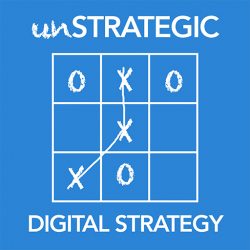….but only if you have an established sales process.
I’ve given this talk a few times. It started out as a flash talk and turned into a full 30-45 minute presentation. I’d like to write out this presentation in long form, that way the next time I give the talk, I’ll be able to direct people to it afterwards.
Let’s begin
How many people here are familiar with the scene “Coffee’s for Closers” in the movie Glengarry Glen Ross? To give a backdrop, Glengarry Glen Ross was originally a play turned into a movie depicting the lives of real estate salesmen. “Coffee’s for Closers” is a scene in that movie where Blake, portrayed by Alec Baldwin, comes down to motivate the other salesmen.
“Put that coffee down! Coffee’s for closers, ONLY! You think I’m f*ck!ng with you? I am not…”
He’s basically saying that if you’re in a sales capacity at an organization and you’re not closing business, don’t drink the company’s coffee, let alone make the base salary that you’re making. And is that true? Should coffee be for closers? The answer it YES!! Absolutely! Coffee should be for closers….but only if you have an established sales process. Because if you don’t, then you can’t expect your sales people to close on a continually basis.
We need a sales process to integrate ourselves into. To focus on it, to make it a standard, and then finally to improve it.
Introductions
So, who am I? My name is Adam Lamagna, sounds like lasagna! Easy to remember!! I am a sales consultant for Sucuri, I help agencies pick the right solutions to secure their websites and their clients’ websites.
When I turned 18 and graduated high school, I flew out to Hollywood, California to become a rockstar, that dream was short-lived! I got into sales and I’ve done everything from cold calling, to door-to-door, inside sales, to high-pressured, hard selling. I got into technology about around 2012 and haven’t looked back since. I’ve worked for a small web agency and a large (enterprise-level) agency. I love business development and sales. I believe sales to be a noble profession!
History of Sales
The history of sales is super important, it gives us an overview of how sales has progressed and where the pivotal moments were. If anyone wants to read more about the sales process, you can always check out my blog post on the history of sales. Starting at the beginning of time, we had the bartering system. You give me this, I give you that — still relevant to this day. But when money was introduced, it turned the bartering system into markets and gave us a system to improve upon.
Fast forward to the Industrial Revolution, this is when the modern day salesman comes into play. He’s also known as the exaggerated salesman, the guy who would sell you snake oil. And from there up to the 1950’s, when we see the fast-talking salesmen come in, it’s really important to note that all the information in the sales process was owned by the seller. If a consumer wanted to know more about a product or service, they had to go to the seller to get that information.
Consumers finally got wise to this, so in the 70’s, 80’s, and 90’s, we see things like SPIN (Situation, Problem, Implication, Need) selling, and Solution selling, and Strategic selling. They were kind of variations of themselves, but they all aimed to bring the consumer into the process, and make them feel like they were making informed decisions based on data. When the 2000’s hit and information was readily accessible, it rocked the very foundation of the selling world. Sellers were no longer in control, it was the age of the buyer!!
Sales Process
What is a sales process? Simply put, it is your view of your customer’s buying journey. With all the tasks, steps, procedures, and resources it takes to effectively manage that buying journey. I separate the sales process into 3 areas: 1—Pre-sales, 2—Engagement, 3—Post-sales.
Pre-Sales
Pre-Sales is planning and preparing to effectively engage the right prospects at the right time with the right tools.
First off, you need to know your buyers. Who are you selling too? What verticals/industries are they in? What do they care about and what do they need to make a decision? You can do your own buyer personas with this link to a HubSpot template — http://offers.hubspot.com/free-template-creating-buyer-personas — this is a really easy way to figure out who your buyers are.
Next is the marketing collateral. What are you using in your ‘sales tool-bag’ to sell people with? Your marketing collateral should do two things. 1). Showcase your talents. 2). Answer your buyers’ questions. You can answer your buyers’ questions by writing blog posts. You probably get asked the same questions over and over again. Well, write a blog post about it! Then showcase your talents through case studies and portfolio pieces. You can also reach out to the giants like WordPress or WP Engine to see if they have any marketing collateral you might be able to use. They’ll have written white papers that are available to download and use. Check it out!
Engagement
Engagement is the fun part! It’s actively talking to your prospect and funneling them down the sales funnel. There are different stages in engagement and it’s important to know the essentials (my own terminology) of each stage:
- Requirement: What is the requirement for a prospect to be in or get into this particular stage?
- Purpose: What is the purpose of this stage? Or what am I trying to accomplish with this stage?
- Team Member: Who am I using in this stage? Is it just me or should I bring another team member in? If you are a freelancer, then what hat (cap) am I wearing?
- Resources: What collateral should I use for this stage? What’s appropriate?
Then you’ll want to grid out each essential for each stage.
Closing
How do you close on a continual basis successfully? That is a phenomenal question. One that I do not have an answer to! But I will say this — it revolves around value! I look at 3 different areas of value.
- Value Relevancy: Is the prospect’s challenge relevant to what I do? In other words, am I the right person to solve this prospect’s challenge? If not, refer them to someone who is. Do NOT chase a client who’s project isn’t relevant to what you do! Please!
- Value Perception: This is a really important thing to learn about, value perception. Understand what the prospect’s perceived value is. Ask questions like “have you ever done a project like this one for your company?” and really try to understand what they perceive your value to be. Because, make no mistake, the perception is the reality. If someone values your skill set to be below what it actually is, then that’ll make for a frustrating partnership and project. If someone comes to you with a budget of $15k, and you know it’ll only take you $5k to do, their perceived value of that project is already $15k. You’re going to need to educate your prospects and sometimes that can be really hard to do. Learn value perception and how big a role it can play in the sales process.
- Value Diagnosis: Focus on your prospect and what they need. Make them a collaborative partner. Remember, it’s about the observable symptoms of problems and how they can be solved within the parameters of the solution. Encourage things like ownership and have a mutual self-respect/mutual self-esteem with your prospect. This can ultimately make you stand out from the competition.
Post-Sales
Once you close business, you then become a client advocate. You need to do a proper handoff with your new client and the Project Manager. If you are a freelancer, then it’s time to switch roles and become that PM. Make sure you explain what’s going to take place over the next month or two, or 7! Make sure your client understands the role and responsibilities they have. And finally, check in with your new client after the project is in full swing. Ask them about the sales process, what did they like or dislike? Ask them if they’d recommend anyone for your services. Keep in touch and become that client advocate — it will lead to more business.
Quick Tips
In sales there are very few things that are within our control. These are the things you’ll want to keep in check:
- Listening: They say great salesmen listen 70% of the time and talk 30% of the time. That is not the case for me, I talk a lot more than that. I wish I could talk less, hehe! I don’t care how much you talk, but when you’re listening, make sure to actually listen. Respond with good feedback and answers.
- Time: If you are not a wealthy person, time is your next greatest commodity, spend it wisely!
- Attitude: The best sales people are the ones who can dust themselves off from a loss and go after the next deal with the same gusto and rigor as they did the very first deal they ever went after! People can hear when you are not smiling over the phone, believe me, they can!
Recap
The sales team and the marketing team work together. The sales process consists of Pre-sales, Engagement, and Post-sales. And doing all this will eventually lead to closing more business and drinking more coffee.

